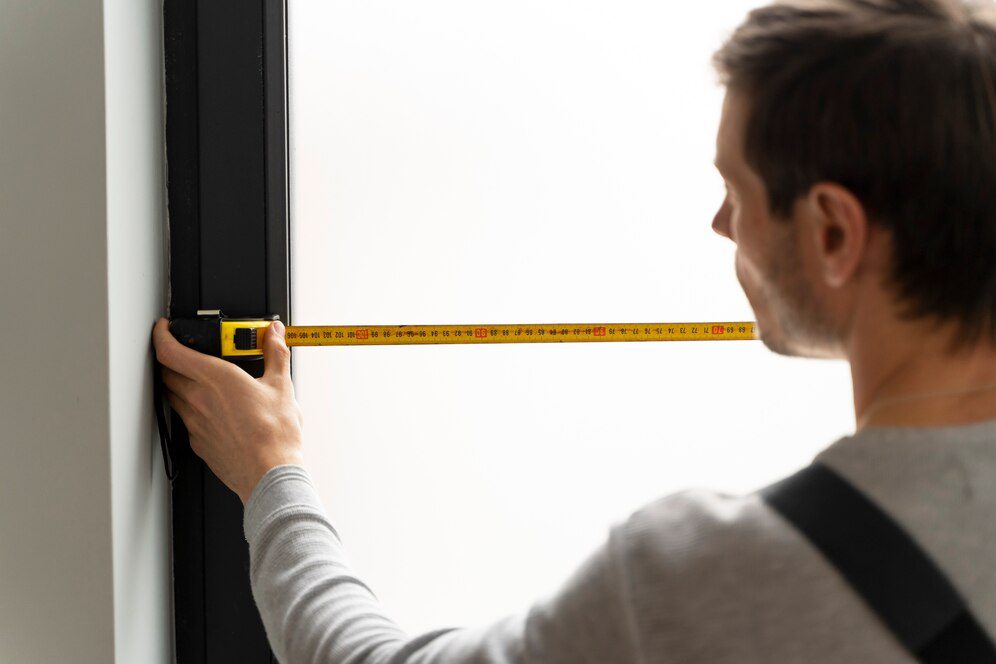>570 reviews

A busted single pane window — whether cracked or shattered — may not seem like the worst, but you do let yourself get lazy about it and let those free breezes or pesky bugs in, and it becomes a big headache. And, if within easy reach, it’s a blatant security hole. Getting it fixed promptly also can help keep your energy costs from creeping up, even if single-pane glass isn’t the gold standard for insulation in the first place.
It’s not just about temperature and electricity bills, though. Broken glass is a hazard for everyone — children, pets, even random passersby. We certainly don’t want to end up injured from leftover bits. So, although single-pane windows aren’t comparable to today’s multi-pane units, repairing them quickly prevents you from having to deal with more serious (and expensive) problems later.
Tools and Materials:
First step: gear up with protective equipment, particularly leather gloves and safety glasses. There’s nothing that makes your day go south like cutting a finger on a jagged shard or, even worse, getting a speck of glass stuck in your eye. Make space around the window — clear furniture, décor or random mess. You can also use a sturdy ladder or stool for access if you work on a taller window.
Before getting out your putty knife, take a look at the condition of the window frame. If there’s some significant rot or water damage, you’ll want to tackle that first. A little wood filler can work wonders, but if it’s worse than that, it may be time for a more significant repair, such as our Window Sill Repair service. Note: a broken frame and a new glass pane is like patching a flat tire with chewing gum.

After you’ve cleared the broken glass out, you’ll have a better view of the exposed window frame. Measure the inside edges — width and height — and subtract about 1/8 inch when ordering the new pane. That little gap helps with smooth installation and helps prevent those cringeworthy cracks that you get if the glass gets wedged in too tight.
Thickness can be a little tricky, particularly in old homes. Although the vast majority of single panes have a standardized thickness, there are older windows that may not. When in doubt, it doesn’t hurt to take a small piece of the old glass with you when you’re shopping. Some people also choose tempered or coated glass for an extra measure of safety or low-key energy efficiency. Yes, it’s more expensive, but it can spare you some future headaches.
Before you place in the new pane, run a thin bead of sealant around the perimeter of the window frame. This additional layer of waterproofing keeps moisture and sneaky drafts out. It’s also a good time to repair any loose frame hardware, like a latch or hinge that wiggles. A rickety, rattly window impairs the value of a snug new glass seal.
Carefully slide in your new pane, and tack it in with putty pins—typically two per side is sufficient to hold the tension evenly. If it’s not sliding right in, don’t force it. A gentle push works most of the time. The last thing you want is to cause your freshly purchased glass to crack by getting a little over-enthusiastic.
Now that your glass is sitting tight, it’s time to make a mess with the putty. Oil-based putty can be slightly warmed (place the container in warm water) to make it more pliable, while latex putty dries more quickly, which is excellent for an impatient person. Squeeze a neat bead of putty around the entire glass edge, filling any space to keep out wind and rain.
For a smooth finish, lightly moisten your fingertip or putty knife. That way you can form the putty into a nice, angle bead that directs water away from the frame. Just keep in mind, if you used latex putty, move a little faster — it can firm up faster than you think.
Once the putty is shaped, allow it a day or two to set (no poking at it or slamming the window). Keep the window from getting blasted with rain until everything’s at least partly hardened, if there’s a chance of downpour. Once the surface has hardened, you may paint over it to blend in with the rest of the window or coat it with a clear sealant to protect it.
It’s a clever thing to inspect your work a few days later. If you see any hairline gaps or pinholes in the putty, smooth the putty, or sealant, over them, and check. That extra bit of mindfulness can help you avoid bigger headaches — like trailing moisture or drafts — later on.

After your new glass is in place and the putty has cured you may want to add a simple inspection to your home care routine. Checking in from time to time can help you catch problems as they arise:
Look for teeny gaps: On a windy day, run your hand around the pane’s perimeter. If you feel a draft, reapply putty or sealant.
Check for Moisture Buildup: If you notice condensation, or streaks, on the interior of the window frame, it could indicate an inadequate seal or a hidden leak.
Check the Frame Finish: Early signs that the frame may need a refresh (or more extensive repairs) are flaking paint or peeling wood.
A two-minute once-over each season can save you a headache later on, and keep your window looking sharp.
Let’s be honest: there’s a point at which a DIY patch turns into a DIY disaster — especially if it’s a window that’s an unusual shape, multiple panes, or if the wooden structure is really warped. You can save a few bucks on the front end doing it yourself, but if something goes sideways, you could end up spending more in the long run. By hiring a professional — such as the pros at Window Gurus — you are assured that the job is done right, with all the stops pulled.
Sure, single-pane replacements are doable for many handy types, but for anything more complicated, you’ll be glad to have someone with the right tools and expertise. It’s not just a matter of inserting a pane of glass; it’s about making sure that glass stays put, seals out drafts and stands up to whatever weather your region dishes out. And they can recommend energy-efficient or state-of-the-art solutions if your windows are past their prime.
Now you’ve got the essentials for replacing a busted single pane yourself. If you’re feeling confident, that’s great — just remember to prioritize safety and take your time. But if you’d like to avoid the gamble or have encountered a sticky situation, Window Gurus is just a call or online chat away. They’ve tackled everything from your basic panes to huge, custom windows that require a little pro touch.
Nobody wants to spend their weekend cleaning up shards of glass or futzing with a resistant putty. Passing the baton to an experienced team ensures a streamlined solution that won’t have you second-guessing every move. Because a well-installed window doesn’t just look good — it helps keep your home nice and toasty, safe from the elements and a whole lot more comfortable. So, don’t be shy. Call the pros and cross that annoying window repair off your to-do list.
Contact us now for a free estimate and take the first step toward repairing your windows!
You May Also Be Interested In:
Please leave your contact details.
The manager will contact you shortly.